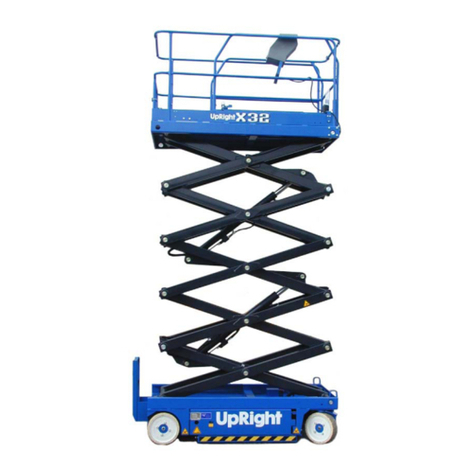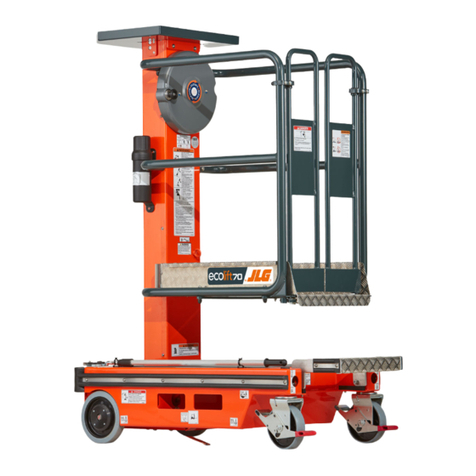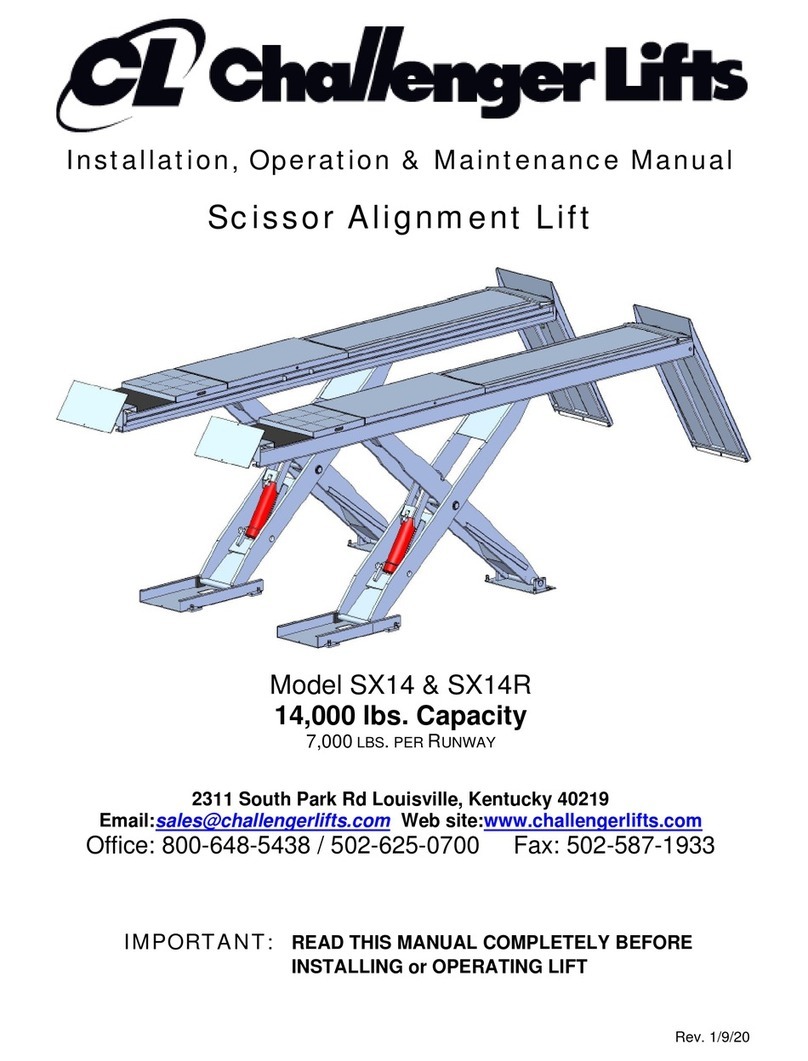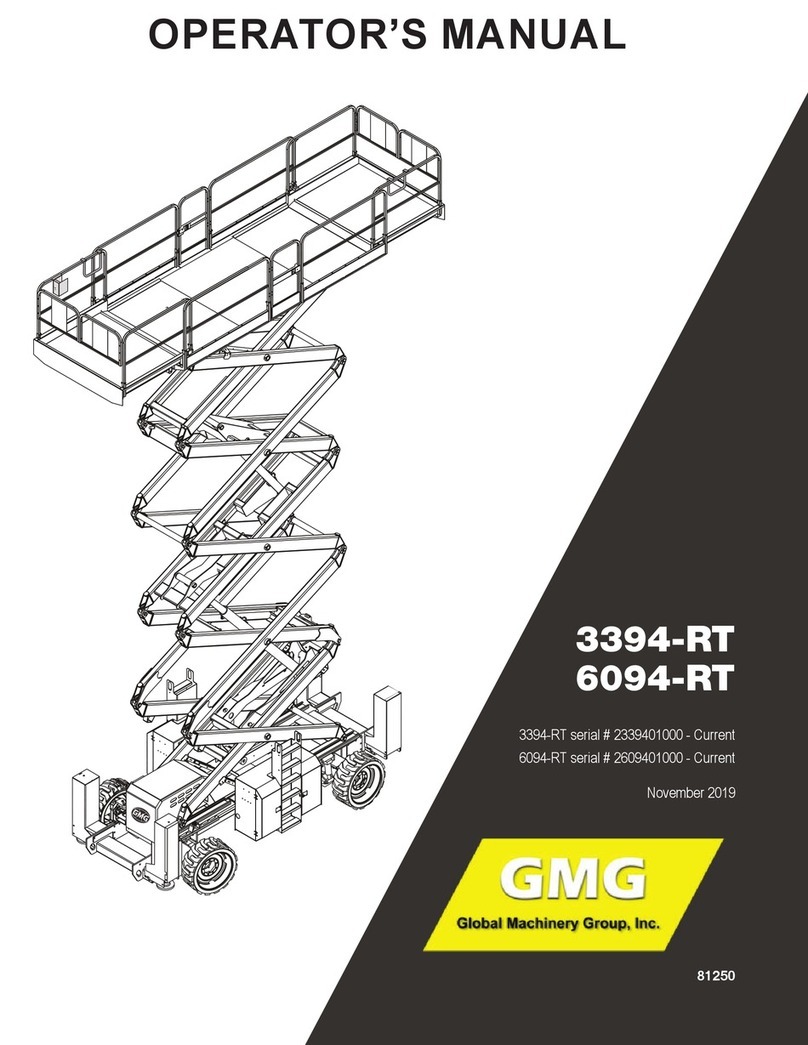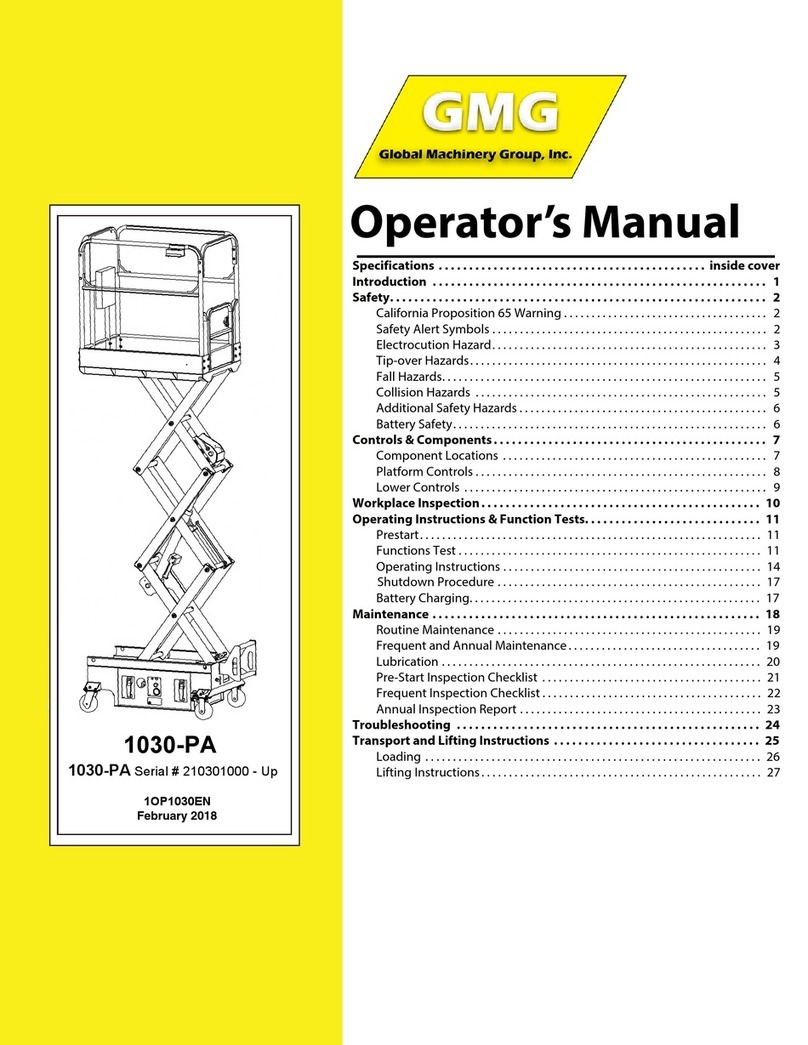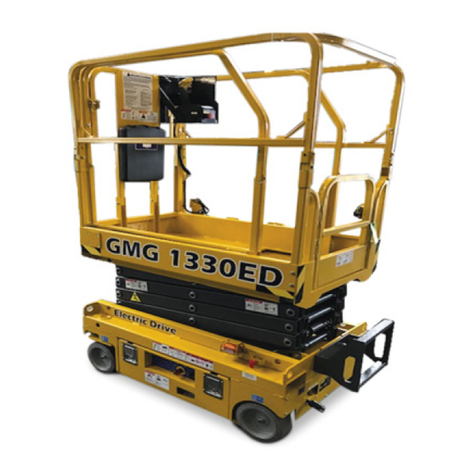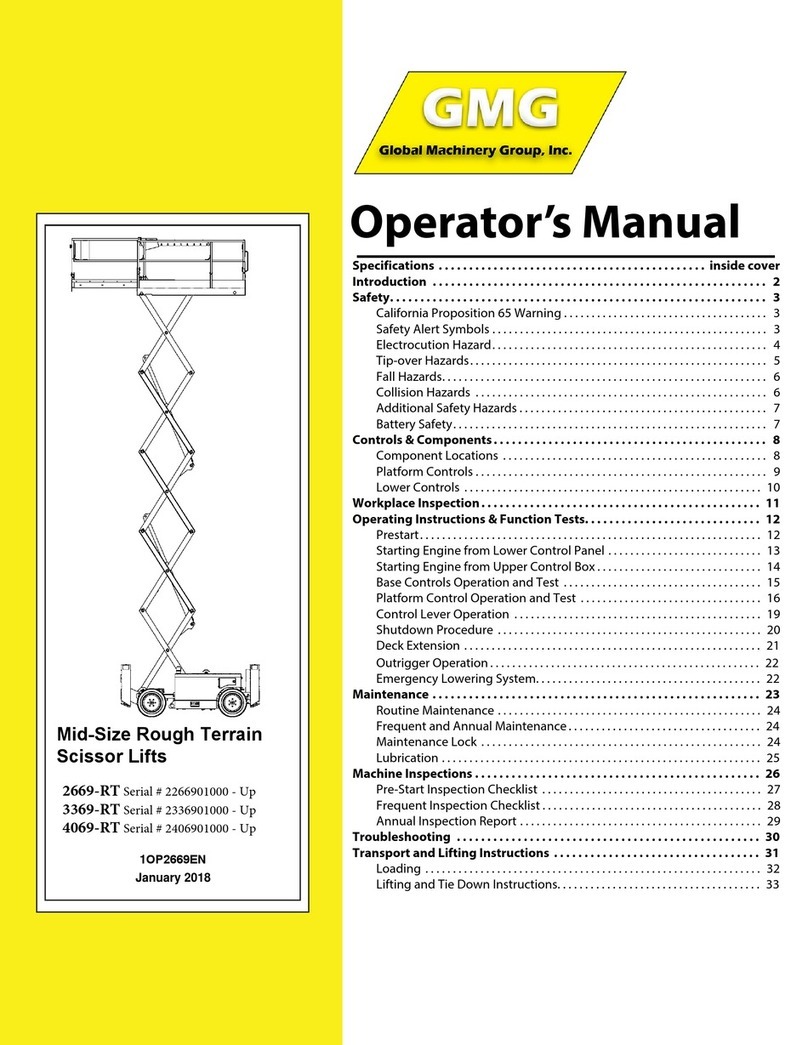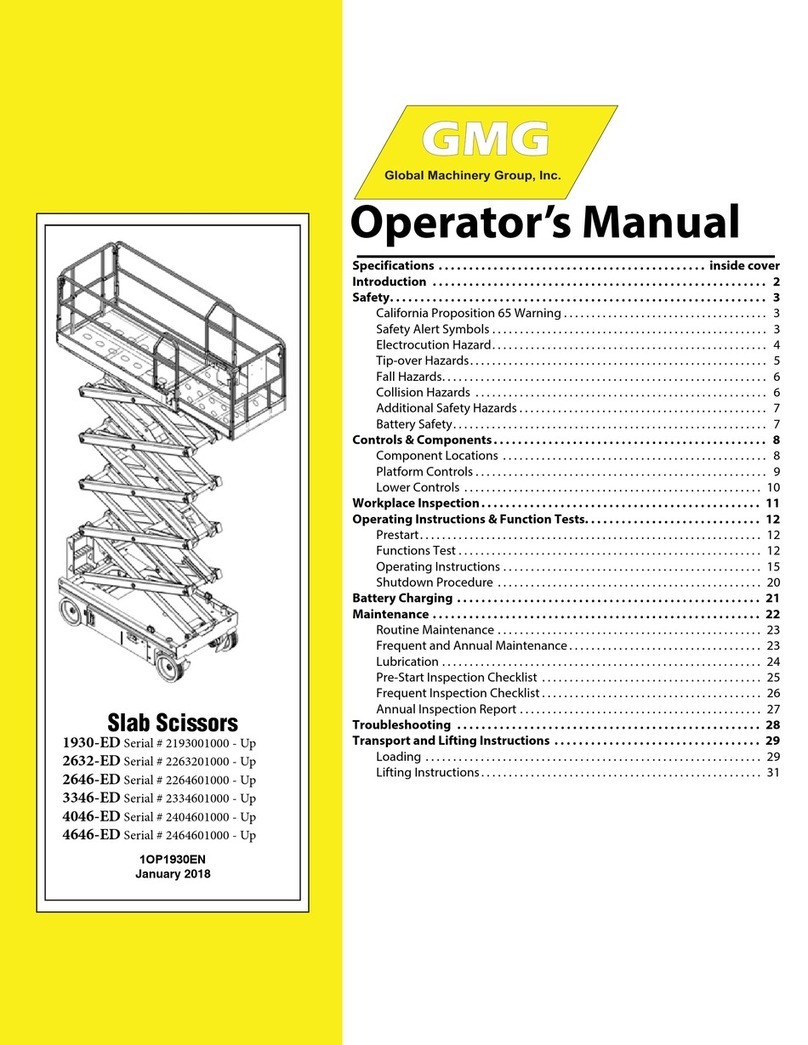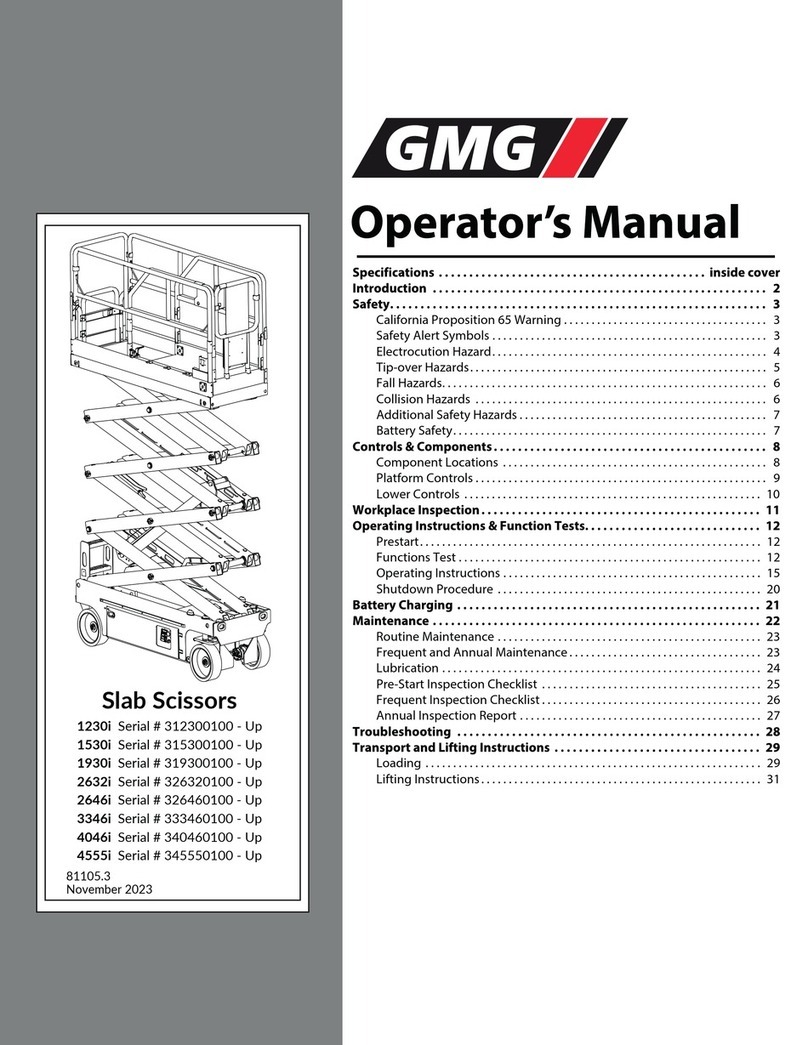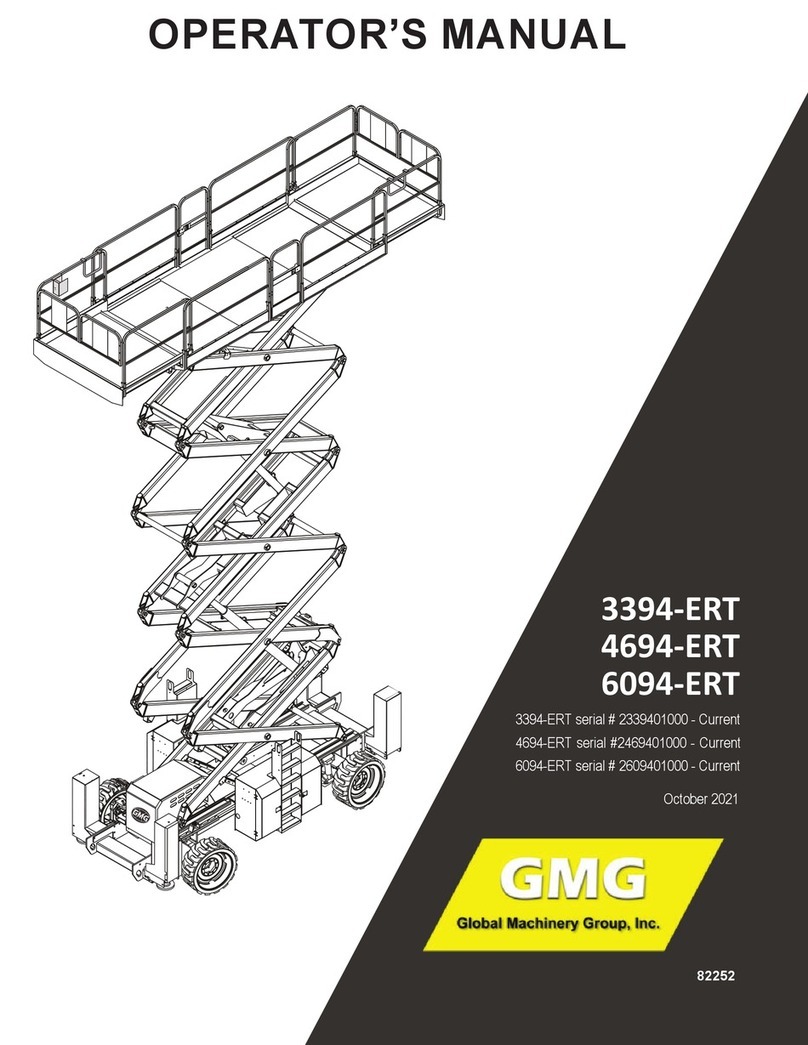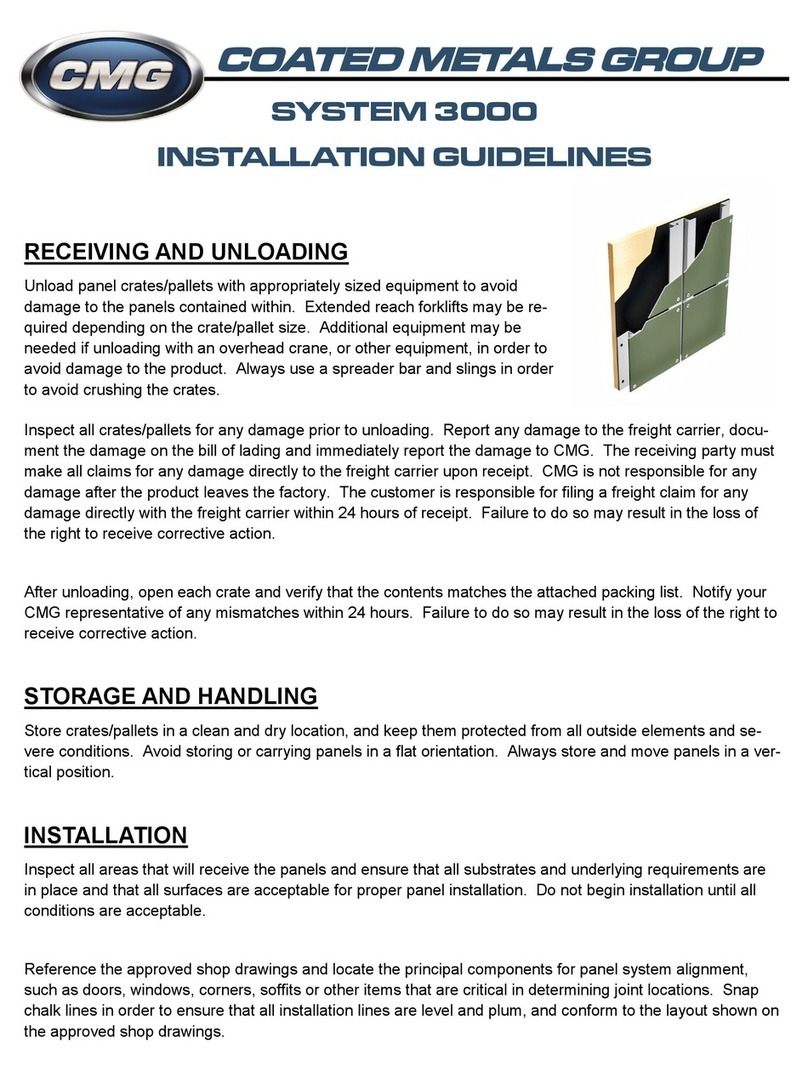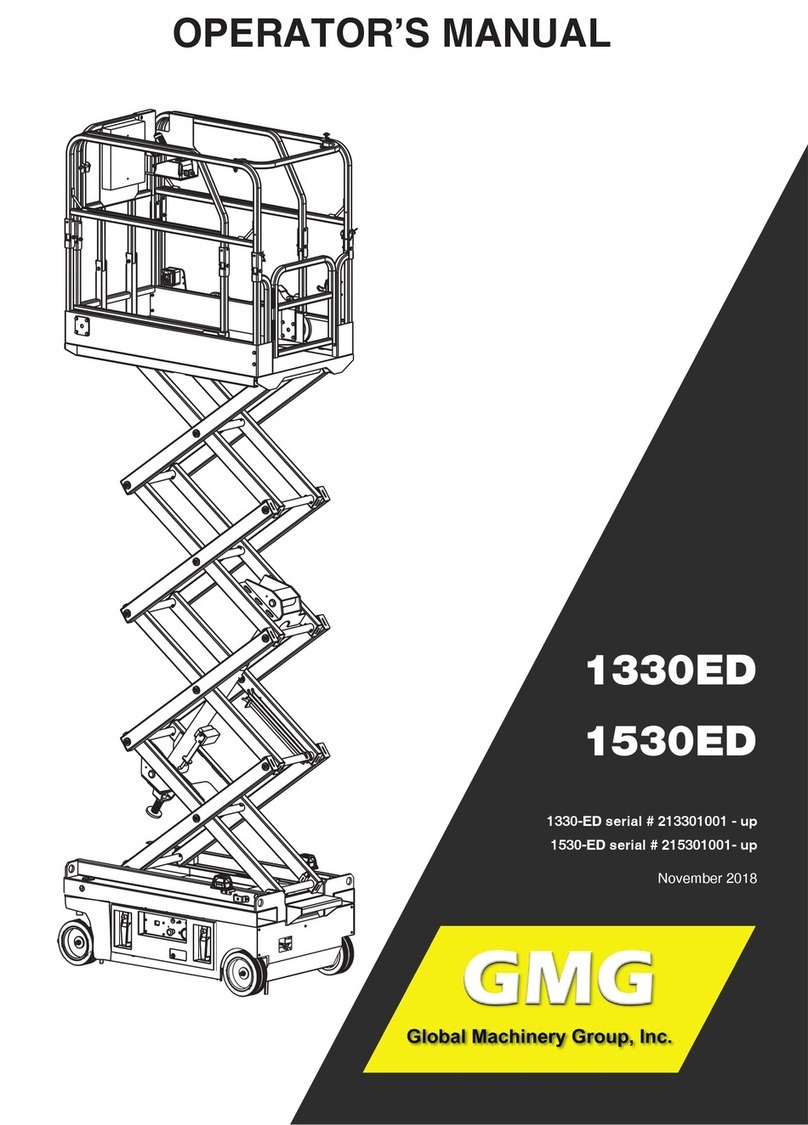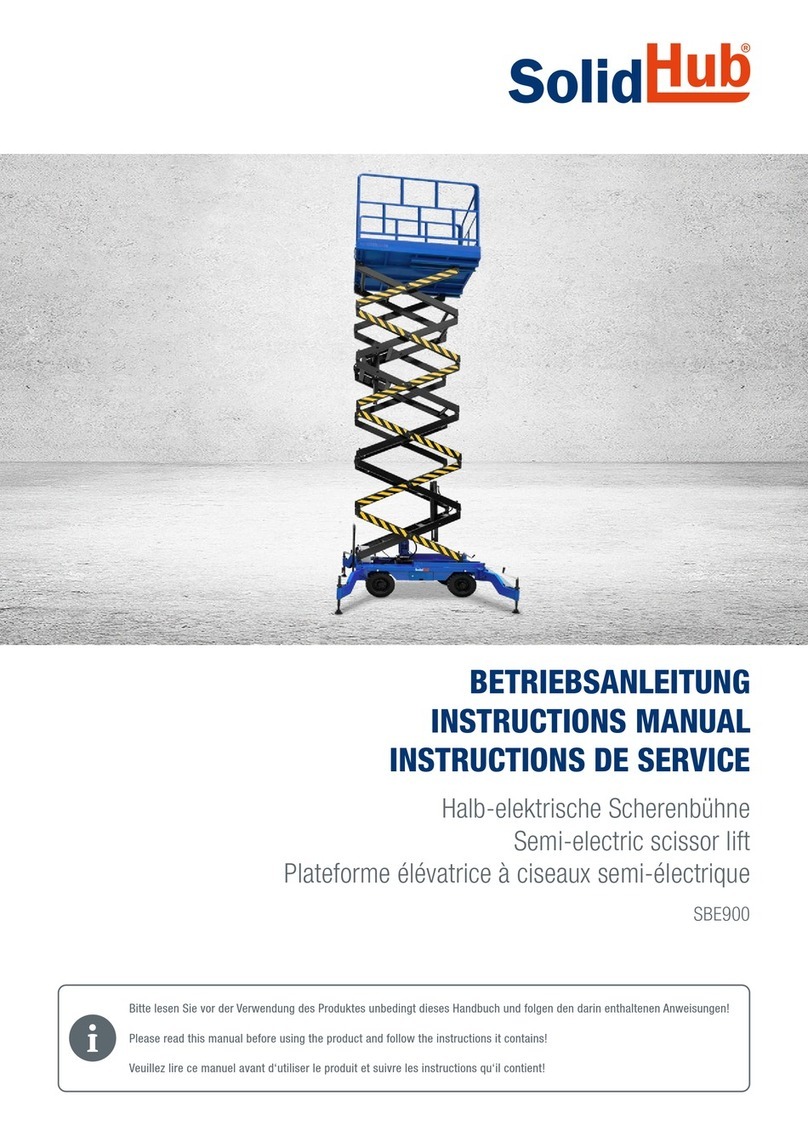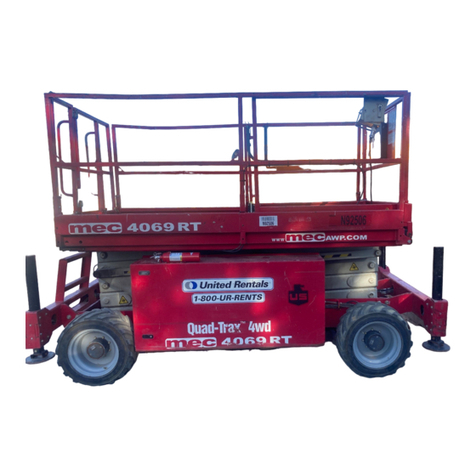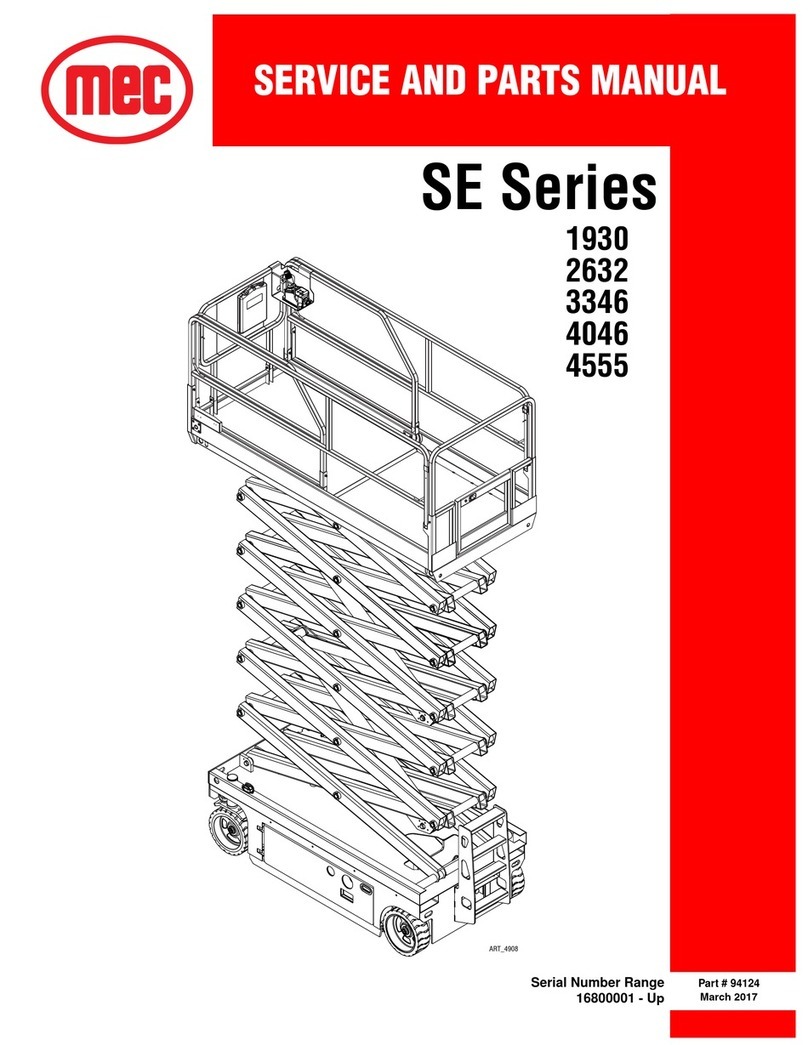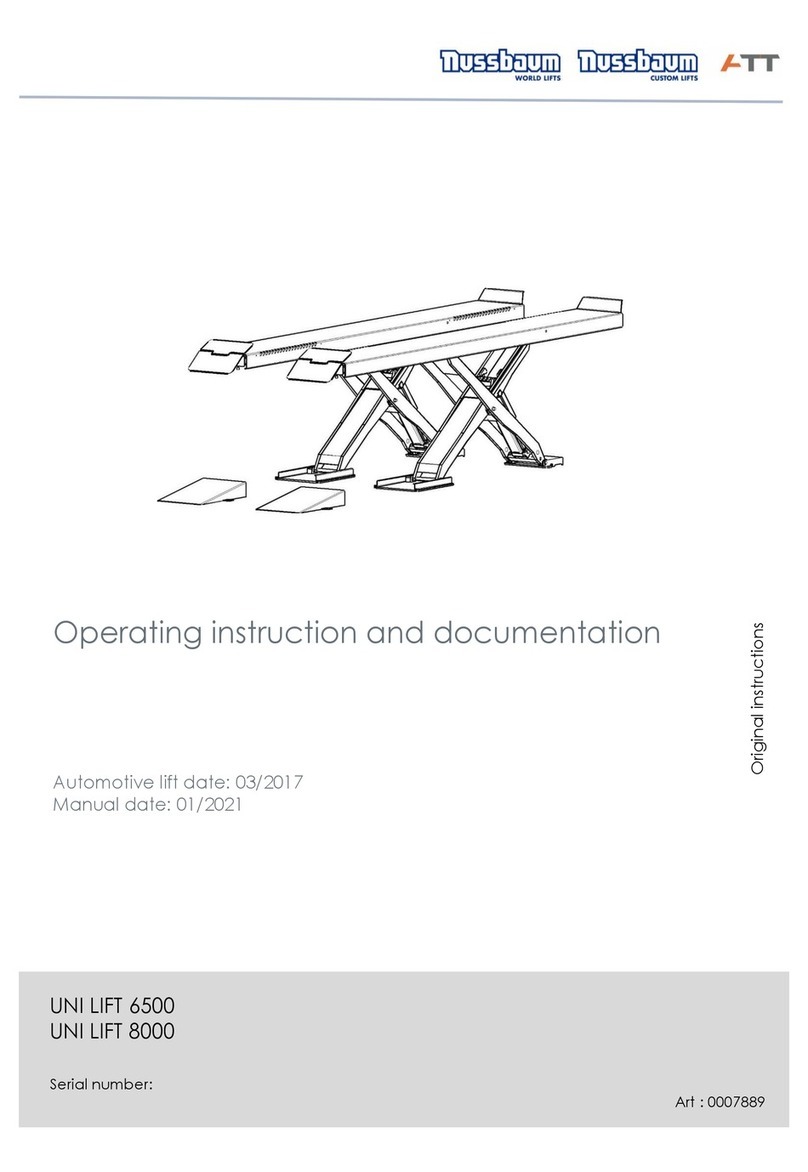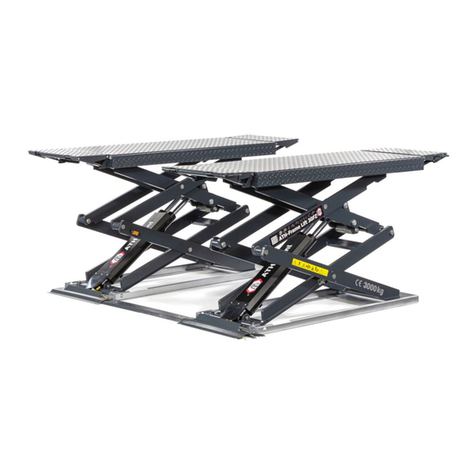
Page 4 1OP1330 – February 2018
1330-ED / 1530-ED Safety
Tip-over Hazards
DO NOT exceed the maximum platform capacity. The weight of options and accessories will
reduce the rated platform capacity and must be factored into the total platform load. Refer to
the decals on the options.
DO NOT elevate the platform when the machine is on a surface that is soft and / or on a slope.
DO NOT depend on the tilt alarm as a level indicator. STOP if the tilt alarm sounds and the
red light illuminates when the platform is raised. Use extreme caution to lower the platform.
Move the machine to a rm, level surface.
Driving: DO NOT drive the machine on a slope that exceeds the maximum uphill or downhill
slope rating. Slope rating applies to machines in the stowed position.
Driving in stowed position: use extreme care and reduce speed when driving across uneven
terrain, debris, unstable or slippery surfaces, and near holes or drop-offs.
Driving with the platform elevated: DO NOT drive on or near uneven terrain, unstable
surfaces, curbs, drop-offs or other hazardous conditions.
DO NOT push o or pull toward any object outside the platform. DO NOT push the machine
or other objects with the platform. DO NOT contact adjacent structures with the platform.
DO NOT tie the platform to adjacent structures.
DO NOT use the platform controls to free a platform that is caught, snagged or otherwise
prevented from normal motion by an adjacent structure.
For outdoor rated machines, DO NOT elevate the platform when wind speeds are in excess of
28 m.p.h. (12.5 m/s). If wind speeds exceed 28 m.p.h. (12.5 m/s) when the platform is elevated,
carefully lower the platform and discontinue operation.
DO NOT increase the surface area of the platform (i.e. cover the rails with tarp or plywood).
Increased surface area exposed to the wind will decrease machine stability.
DO NOT attach overhanging loads or use the machine as a crane. DO NOT place loads outside
the platform perimeter.
NEVER transport tools and materials unless they are firmly secured. Secure all tools and loose
materials.
NEVER alter or disable any machine components.
NEVER replace any part of the machine with items of different weight or specification.
NEVER modify or alter the work platform without written permission from GMG.
NEVER place ladders or scaffolds in the platform or against any part of the machine.
NEVER use the machine on a moving or mobile surface or vehicle.
Ensure that all tires are in good condition and lug nuts are properly torqued.
DO NOT operate the machine with the chassis trays open.
DO NOT alter or disable the limit switches or machine components that in any way affect
safety and stability.
DO NOT replace items critical to machine stability with items of different weight or
specification. DO NOT modify or alter this machine without prior written permission from
the manufacturer.
DO NOT use batteries that weigh less than the original equipment. Each battery must weigh
55 lbs/25 kg. The batteries must weigh a minimum of 110 lbs/50 kg.
DO NOT OVERLOAD
DO NOT DRIVE ON IRREGULAR OR
UNSTABLE SURFACE
DO NOT PUSH OR PULL OBJECTS
OUTSIDE PLATFORM
DO NOT ELEVATE IN WINDY
CONDITIONS
DO NOT USE AS CRANE
Maximum Allowable Side Force
50 lbs (222 N) per person
